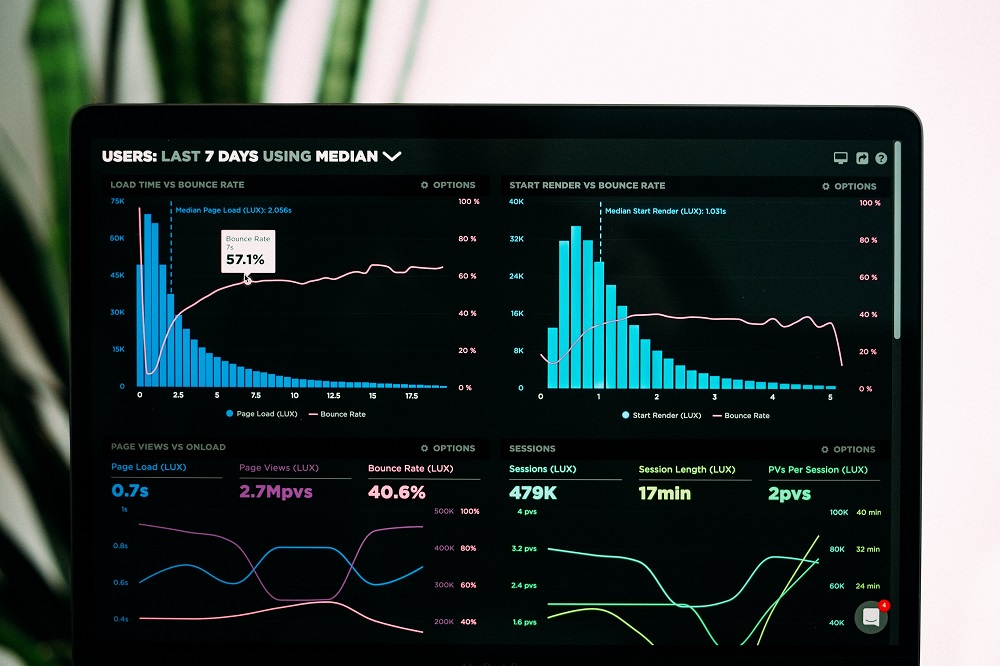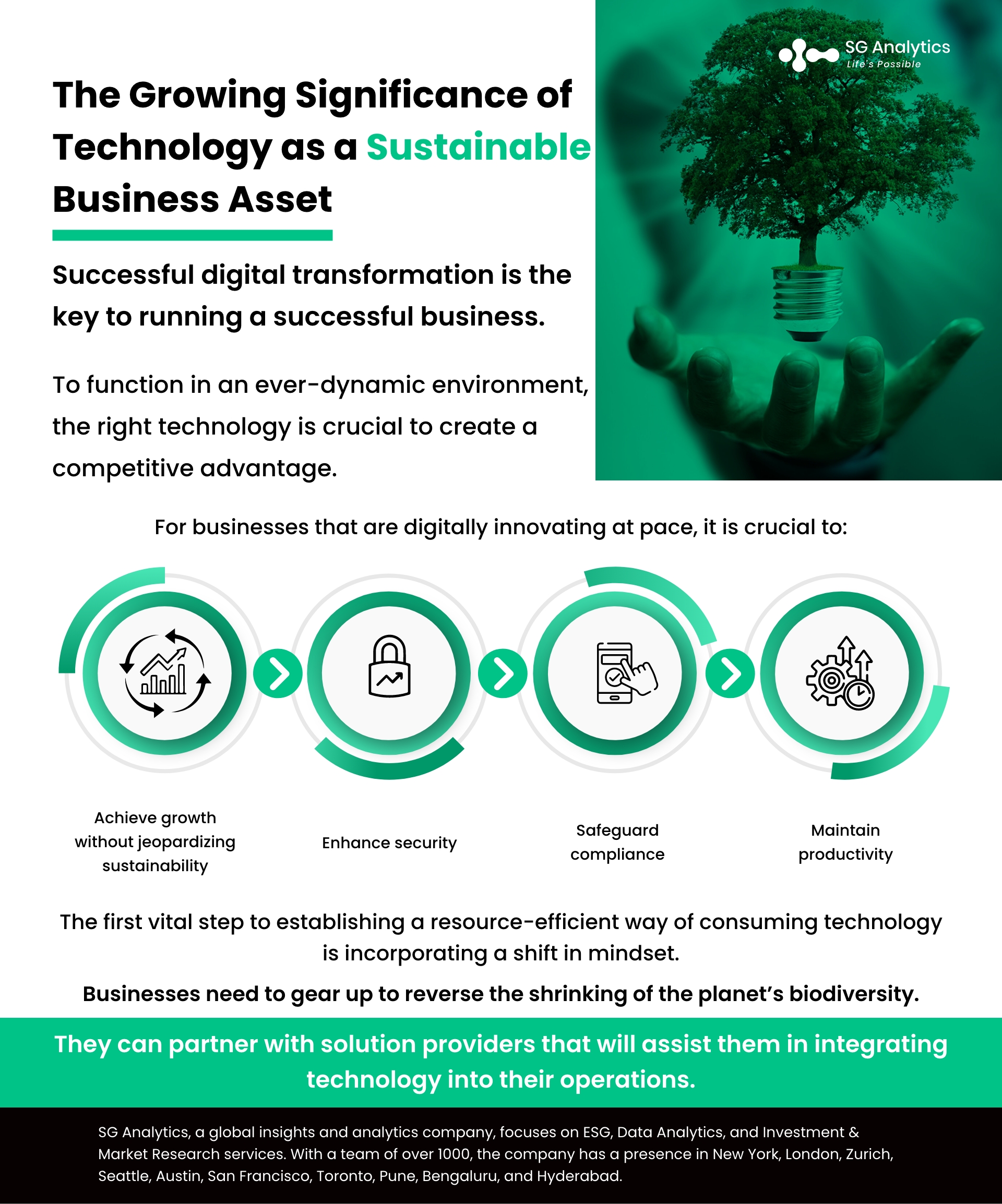Unpredictability has become the new normal since the Covid-19 emergency. And businesses have quickly realized that digitalization is the only way to build the resilience they need to succeed. Hence, in this post-pandemic world, technology and its access to data is not just the backbone but also the beating heart of the business.
Today digital transformation offers the best chance for businesses to compete, deliver a distinguished customer experience, and unlock future success.
Erratic supply chains, a hybrid workforce model, geopolitical unrest, and a heightened regulatory environment - all indicate that it is now imperative for organizations to counterbalance the opportunities provided by digital transformation with the risks inherent in managing the technology.
Read more: Sustainability in Tech: 3 Ways for Companies to Become More Sustainable
The Dawn of Technology-As-A-Service 2.0

Technology provides organizations with a unique platform to accelerate their development, remain competitive, and take advantage of market opportunities. If used wisely, technology offers the chance to support this transition to a greener, sustainable, and more inclusive society.
Gartner's forecasts exhibit that IT spending is likely to reach $4.4 trillion in the year 2022 year. Hence service providers must step up to make it possible for businesses to gain the most from their investment in digital innovations. This indicates that businesses need to consider technology’s life cycle— from financing to decommissioning—to optimize value and minimize liabilities, thereby reducing its negative environmental impact.
Digital Technologies are Becoming Ubiquitous
While digital transformation represents the growing prominence of digital technologies in traditional industries, there is a fall in the prominence of digital technologies in the next era. But this cannot be perceived as a sign of the decline of digital but rather as a prerequisite for digital technologies to emerge in the light of sustainable and economic prosperity.
With the hype around digitalization fading, businesses are driving strategies that are being driven by fear of digital disruption. Businesses are making better decisions to lead the real investment in productive assets, productivity gains, and improvements in standards of operations by putting the new digital technology to work.

The areas of opportunity that are emerging as the key leader of the sustainability agenda are:
-
integrating a holistic, integrated data and insights program to estimate and drive environmental sustainability
-
incorporating a sustainability-driven tech strategy
-
driving transparency and accountability in the operations
With access to digital tools becoming easier, the situation is emerging as a critical differentiator in itself. While businesses are quickly adapting to the new digital circumstances, digital data breaches are also emerging as a threat. Data breaches are becoming more aggressive, heating up the regulatory environment.
Read more: Tech-Related Ethical Concerns Businesses Should Address in 2022
Businesses need to get to grips with how to protect their data during the device life cycle and after. Today, it is unheard of for an organization to supervise its operational devices without a cybersecurity plan. No organization can afford technology with sensitive data that is likely to fall into the wrong hands. Leading businesses are already employing high-powered asset management platforms to supervise and execute their portfolio of devices, both operationally and financially, in order to ensure the resilience of their digital transformation.
Paving a Sustainable Way Forward

Today sustainability is no longer a buzzword. It has grown into an environmental, economic, and social driver that is not only changing our everyday lives but also defining the course of business operations in almost every way imaginable.
Sustainability goals and consequent efforts are enabling businesses to determine how to survive digital transformation. Leading corporate boards are now tracking every milestone of their enterprise sustainability along with the outcomes.
When considering sustainability, businesses also need to start thinking of the social aspects. As a standard factor across these, technology will be a critical player. While the solution is multi-variable-dependent, it can benefit from the use of technology. Technology can assist businesses in measuring as well as enhancing their productivity, offering efficiency and cost savings, and analyzing and tracking progress. All these elements will help minimize the negative impact on the environment.
To achieve environmentally-sustainable economic development, businesses will have to initiate at the local level. Individual countries, in conjunction with their stakeholders, need to develop approaches to solve sustainability crises that are tailored as per their own rate of economic development, cultures, and political systems.
Businesses need to gear up at an exponentially-increased speed to reverse the shrinking of the planet’s biodiversity by employing renewable energy sources and preserving natural resources. Sustainability is emerging as a crucial factor in meeting organizational needs without compromising the ability of future generations.
Read more: Aligning ESG with Corporate Strategy to Gain a Competitive Advantage
The Emergence of Circular Opportunity

Businesses are opening up to the idea that committing to sustainable practices is no longer a 'nice to have' element in the portfolio but a 'must do' component. With the negative impacts of the climate crisis becoming more obvious and ominous, businesses need to show their potential to alter every aspect - from supply chains to profitability. To minimize the harmful impacts, they need to have a solid understanding of the scope of the problem at hand.
-
While businesses are upgrading their devices to meet the changing demands, they must also address the environmental impact of their technological actions, one that cannot be reduced by recycling alone.
-
E-waste is considered one of the fastest-growing waste streams globally. Consumers, governments, and shareholders are now putting pressure on organizations to address this underlying issue.
-
With regulatory margins within the organizations narrowing, the circular economy is the obvious answer for organizations exploring to innovate while integrating sustainability in the digital transformation.
Circular technology service models are reinforcing businesses to fuel their operational growth with new hardware while authorizing repair and reuse to be baked into the procurement process. By applying the circular economy principles, businesses can subside the environmental liabilities associated with technology, thus reducing the carbon impact of devices and minimizing e-waste.
Establishing Strategic Resilience

Today, a successful digital transformation is a key to running a successful business, but businesses do not operate in a vacuum. They function in an ever-dynamic environment that is influenced by many external factors. A wide variety of innovative solutions today are being brought forth by organizations across the globe that are committed to ensuring that the planet can thrive for generations to come.
The right technology is crucial to create a competitive advantage. With every organization racing toward net zero, reducing the environmental impact of tech assets is both an operational and reputational imperative that is slowly attracting the attention of many. And as businesses are digitally innovating at pace, it is crucial for them to achieve growth without jeopardizing sustainability, enhancing security, safeguarding compliance, and maintaining productivity.
Unlocking the solution to the organizational impact on the environment won’t be easy and won’t happen overnight. But it can be accomplished, and technology will undoubtedly be a crucial part of the solution. Only by considering technology as a value-generating business asset rather than a tool can businesses build strategic resilience, seize opportunities and manage risk, thus making their digital transformation a true fit for the future.
Read more: The Sustainability Investments Revolution & its Impact on Climate Targets

Integrating a New Mindset
For an organization, irrespective of its size or industry, the first vital step to establishing a resource-efficient way of consuming technology is incorporating a shift in mindset. This mindset will enable them to transition from a traditional model toward a system where access to devices will be perceived as the key to growth, innovation, and competitive advantage. This will help inculcate a practice where resources are reused rather than wasted. However, just a new mindset is not enough. Businesses need to inculcate new practical, actionable, and profitable solutions to make this leap.
The good news here is - starting this transition toward circularity is easier than ever.
Organizations can partner with solution providers that will assist them in integrating technology in their operations and center it on organizational activities. This will help them optimize their IT stack, simplify their procurement processes, and manage their costs while improving their sustainability credentials.
With a presence in New York, San Francisco, Austin, Seattle, Toronto, London, Zurich, Pune, Bengaluru, and Hyderabad, SG Analytics, a pioneer in Research and Analytics, offers tailor-made services to enterprises worldwide.
A leader in the Technology domain, SG Analytics partners with global technology enterprises across market research and scalable analytics. Contact us today if you are in search of combining market research, analytics, and technology capabilities to design compelling business outcomes driven by technology.









